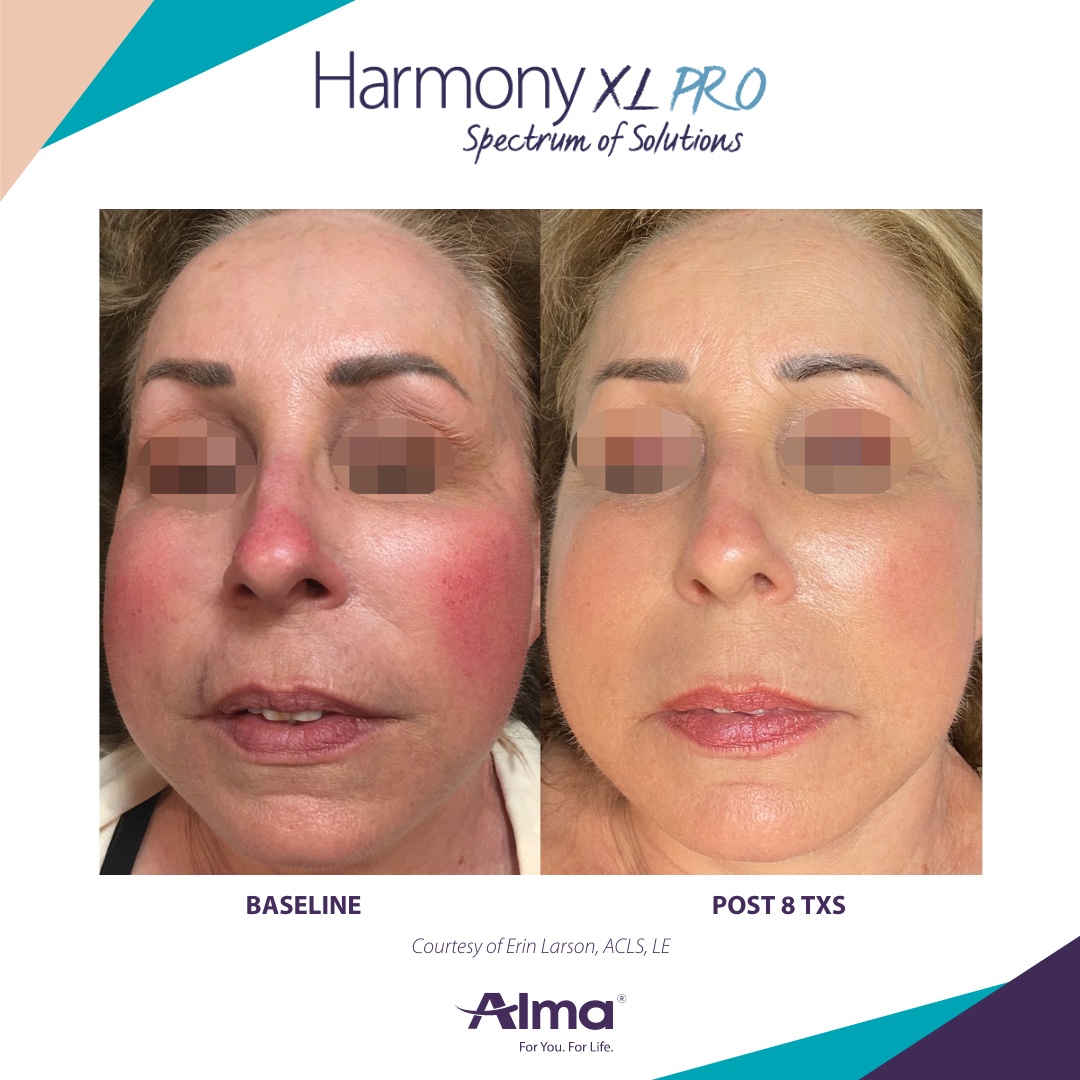When you feel embarrassed or self-conscious about something, you may experience the natural reaction of blushing. What does it mean when your face has a flushed/blushing appearance for weeks or even months at a time? This is likely evidence of rosacea, a very common skin condition.
Rosacea is harmless but can diminish your self-esteem. At the Wisconsin Institute of Plastic Surgery, we are pleased to provide full diagnostics and treatment options for patients with rosacea, including those who live in Appleton, Green Bay, and outlying communities.
What is Rosacea?
Rosacea is a skin condition characterized by blushing, flushing, and/or the appearance of blood vessels on the face. Some patients who have rosacea may also experience the development of small, pus-filled blemishes and bumps.
Rosacea is a cyclical condition, flaring up for weeks or even months at a time before going into remission. Though there is no cure for rosacea, there are a number of treatments that can keep symptoms in check.
How is Rosacea Diagnosed?
Rosacea can be difficult to diagnose, as its symptoms are easily mistaken for acne or for a naturally “ruddy” appearance.
When you join us at the Wisconsin Institute of Plastic Surgery, your skincare specialist will perform a careful visual inspection of your symptoms. We will also ask some questions about your medical history. These simple, non-invasive diagnostic tools are typically enough to rule out other conditions and confirm a diagnosis of rosacea.
Causes
While the specific cause of rosacea is undetermined, many clinicians believe it can be caused by an overactive immune system, environmental factors, or genetic factors.
There are a number of factors that can trigger the flare-up of rosacea symptoms. Some of the most common triggers include:
- Hot beverages
- Spicy foods
- Alcoholic beverages, especially red wine
- Extremes in temperature
- Wind
- Exposure to the sun
- Intense emotions
- Strenuous exercise
Symptoms
Rosacea can present with a number of signs and symptoms. The most common of these include:
- Facial blushing, or a flushed appearance
- Small blood vessels and veins, visible on the face or nose
- Swollen bumps, often resembling acne outbreaks
- A hot, tender, or burning sensation in the affected areas
- Dry or irritated eyes
- Enlargement of the nose (this happens when rosacea goes untreated for a long time)
If you experience any of these symptoms, we recommend seeing a provider about rosacea diagnosis and treatment.
Meet Our Team
At the Wisconsin Institute of Plastic Surgery, our dermatology physician assistants, Colleen Van Egeren, PA-C and Megan MacCarthy, PA-C, have 34 years of combined experience treating various skin conditions. As dermatology specialists, they would love to talk with you about your needs and recommend a skincare treatment program just for you.
How is Rosacea Treated?
While there is no known cure for rosacea, there are a number of treatments that can safely and effectively control the flare-up of rosacea symptoms. The specific treatment can vary from patient to patient but will generally involve a combination of medications with ongoing skin care.
Types of Rosacea Treatments
At the Wisconsin Institute of Plastic Surgery, we provide custom treatment plans that are tailored to each patient’s needs. Depending on the severity of your rosacea, we may recommend different types of treatments, which can include:
- Topical medications. There are a number of creams and gels that can help reduce the appearance of blushing or flushing. These medications often provide clear results in mere hours.
- Oral medications. Our skincare specialists may recommend either oral antibiotics or oral acne medications to minimize rosacea bumps and blemishes.
- Laser therapy. We may also suggest using laser therapy, a safe and effective way to render the blood vessels less visible.
Also, be prepared to talk with one of our dermatology physician assistants about potential lifestyle changes, such as identifying and avoiding the things that trigger rosacea flare-ups.
What to Expect?
As you seek treatment for your rosacea symptoms, it is only natural to have some questions. Here is a general rundown of what you can expect from rosacea treatment at the Wisconsin Institute of Plastic Surgery.
During The Appointment
Your initial appointment will simply involve a visual examination of rosacea symptoms, as well as some questions about your medical history. We will talk with you about different treatment options, and you may be able to start your treatment right away. Note that all of the rosacea treatments we offer are safe, painless, and non-invasive. You will not need anesthesia or surgery.
After the Rosacea Treatment?
Following rosacea treatment, one of our dermatology physician assistants will recommend some ongoing steps for home care. Some of the most common guidelines for rosacea aftercare include:
- Identifying and avoiding rosacea triggers
- Using the proper protection against sun exposure
- Cleaning your face with gentle, non-abrasive cleansers
How Many Treatments Will I Need to See Results?
The number of treatments required depends on the severity of your rosacea, plus the type of treatment you receive. For those who get laser therapy, it is reasonable to expect one to three treatments in order to get the desired results. Medications may be used on an ongoing basis to keep rosacea symptoms under control.
Seek Treatment for Your Rosacea Symptoms
Rosacea can be distressing, but it never has to be something you just accept. There are a number of treatments that can make a massive difference. To learn more about treatments for rosacea in Green Bay or Appleton, schedule a consultation at the Wisconsin Institute of Plastic Surgery.





